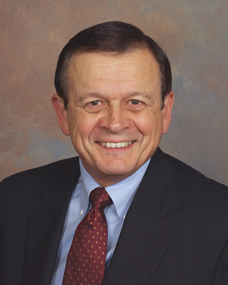Like most editors, I am frequently asked about the editorial policy for Microscopy Today. The stated objective is “to provide information of interest to microscopists.” Our articles are of four types: new instruments and methods, new research results, hints and tips, and topics of general interest to the microscopy community. Articles undergo editorial review rather than peer review.
Without doubt the primary objective is to inform readers about innovative instruments and methods that make microscopy and microanalysis better, quicker, and easier. Examples in this issue are the articles by Sijbandij et al. and Schnitzer et al. The first article describes a new instrument that combines the helium ion microscope with secondary ion mass spectrometry (SIMS) to achieve a record 10 nm spatial resolution of analysis. The second article describes a freely available app that simulates ronchigrams to aid in understanding the alignment of aberration-corrected scanning transmission electron microscopes. Also, each year the September issue contains an article describing the ten winning entries of that year's Microscopy Today Innovation Awards.
Spherical aberration of electron lenses has limited the possible image resolution since the invention of the electron microscope; thus, one of the most important innovations of the last two decades has been the aberration-corrected electron microscope. This technology has allowed sub-Ångstrom microscopy, and atomic resolution has become routine in transmission electron microscopes employing Cs correctors. The next step is to devise clever experiments that yield results which were previously impossible. The article by Dai et al. shows atomic-resolution microscopy with a windowed gas cell, allowing atomic processes under reactive gases to be observed and measured.
Hints and tips are provided in Microscopy 101 articles and in NetNotes. While M101 articles are meant to describe basic operations and methods for less-experienced microscopists, occasionally an experienced microscopist will provide a personal method for a task that is accomplished in various ways in different labs. Such is the case for the short M101 article by Lyman on astigmatism correction. NetNotes is a digest of questions and answers from two online forums: the Microscopy Listserver and the Confocal Listserver. The latter joins NetNotes for the first time in this issue.
Topics of general interest include Microscopy Education articles (see article by Vaccarelli), Microscopy Pioneers, Industry News, Product News, the occasional Opinion piece, and a comprehensive calendar of meetings and courses. In this issue there is also a summary of a panel discussion on how to get funding for instrumentation (article by Brantner).
Where does the information come from for this magazine? It comes from authors who build microscopes, sell microscopes, use microscopes, teach with microscopes, and love microscopes. It comes from the microscopy community.



